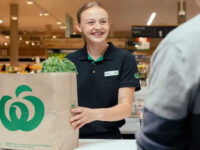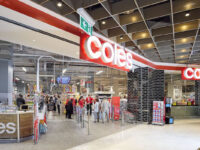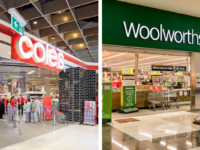 Woolworths is benefiting from improvements in consumers’ perception of its convenience, low prices and loyalty offer, and this has translated to gains in its share of grocery, fresh and main shop visits.
Woolworths is benefiting from improvements in consumers’ perception of its convenience, low prices and loyalty offer, and this has translated to gains in its share of grocery, fresh and main shop visits.
That is the key takeaway from UBS’s most recent supermarket shopper scorecard, a bi-annual survey that measures shopper spend and perception of Australian supermarkets.
The survey, which was conducted with 1100 shoppers in February, showed an improvement in consumers’ overall perception of Woolworths across five key metrics – convenience, low prices, value for money, loyalty and sales/promo – compared to June 2018.
Consumers’ overall perception of Coles and Aldi was down compared to June last year, and their perception of IGA was flat.
Notably, Woolworths’ score on ‘price perception’ was higher than Coles for the first time since the survey began in 2016.
This is a significant change at a time when price and convenience have returned as the top driver of where consumers shop, following loyalty’s rise in significance last year. And Woolworths is gaining share as a result, as Roy Morgan found in its research released earlier this week.
According to the UBS survey, Woolworths gained share of grocery, fresh and main shop visits in February, compared to June 2018, largely at the expense of Coles.
Aldi’s share of grocery and fresh visits was down, despite its expanding national coverage, while it saw a rising share of main shop visits. IGA’s share of grocery, fresh and main shop visits was up slightly, while cross-shopping between Aldi and IGA fell.
While shopper frequency continues to rise, fewer people are shopping more often than they were six months ago, the survey found. UBS attributes this to the growth of online, meal kits and delivery, which it believes is beginning to have an impact on the frequency of shopping.
According to the report, meal box subscriptions in Australia have about 10 per cent penetration, and growing.
“We estimate the market today is a [more than] $500m market, growing at double digit rates, with growth coming almost exclusively from the traditional grocery / specialist channel,” the report states.
Survey respondents said convenience was their key reason ordering meal kits, though lower cost compared to supermarkets was also a driver. Around 38 per cent of respondents said they would spend less on fresh in supermarkets due to meal kits, up from 34 per cent in June last year.
“While meal kits are growing rapidly and are a risk to incumbents, we believe supermarkets have time to act, with only ~3% of shoppers willing to subscribe to a meal-kit offer. We believe affordability, reach and awareness are key impediments which will improve over time,” the report states.
“Australian supermarkets continue to remain underpenetrated in the ready-to-eat space, with penetration <1/4th that of global developed peers. We believe Australian grocers will need to innovate and expand their ready-to-eat meal offerings to compete with meal kit solutions.”
















